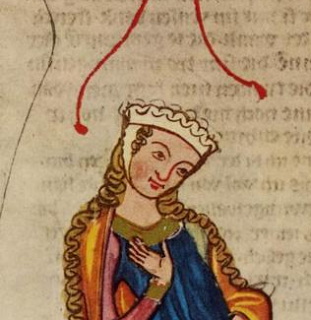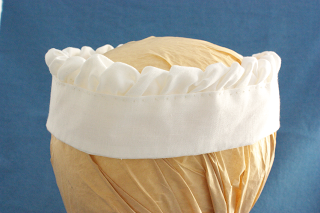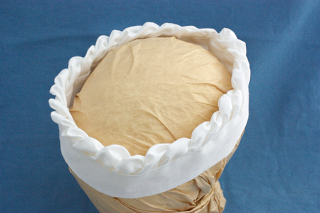If you have looked at late-medieval pictures from Germany, chances are high that you have seen some from the Manesse Codex (completely online here, courtesy of Uni Heidelberg).
There's an iconic version of the female headdress of the barbette-and-fillet type in there, showing a wavy upper part. Like this:
(That's from fol. 32 v. Lots more to be found in the manuscript.)
I have heard about many different ways for a possible reconstruction of this wavy upper edge, and have seen a lot of interpretations - ranging from textiles woven with a ruffled edge, sewn-on ruches and ruffles to bands folded down and pleated, to an attached cord. It's perfectly possible that all these kinds of achieving a wavy edge were in use back then, but personally I have never seen a version that really convinced me.
Recently, I have added another interpretation to the mix - this one:
It's all linen (though it would be possible to make it with a stiff enough silk fabric), and the ruffled edge is made from the same fabric as the main part of the fillet. I think it might be possible to tickle it into even more similarity with the Manesse depiction, but for now, I am not unhappy with the visual impression...


